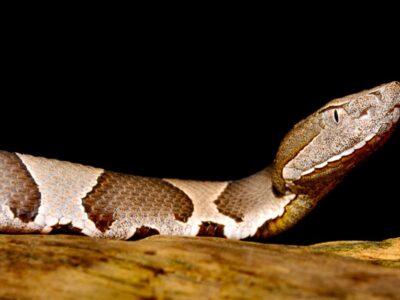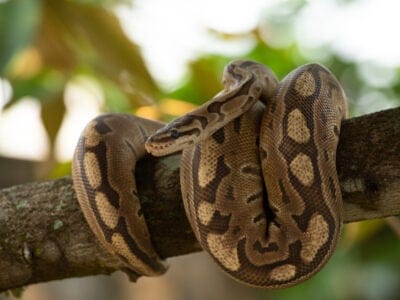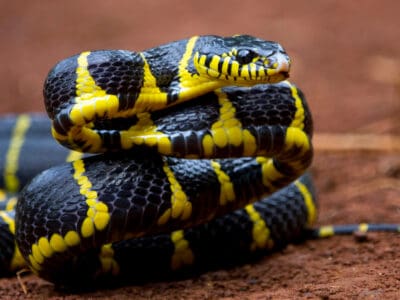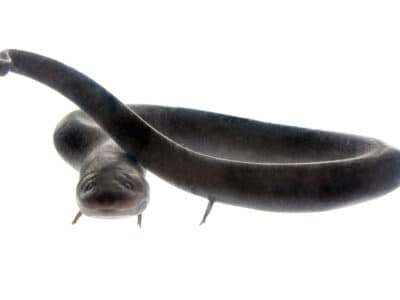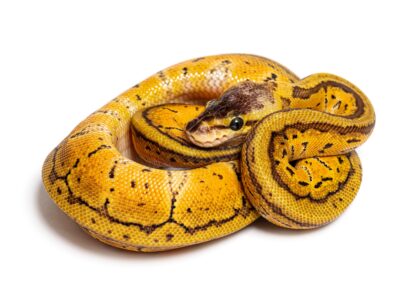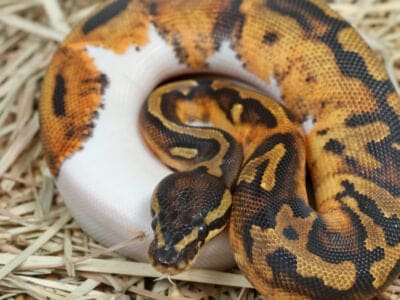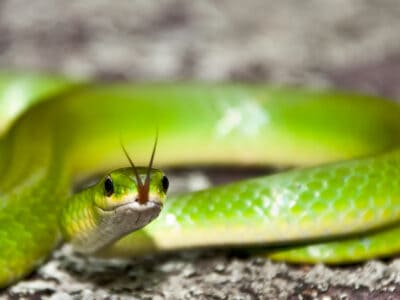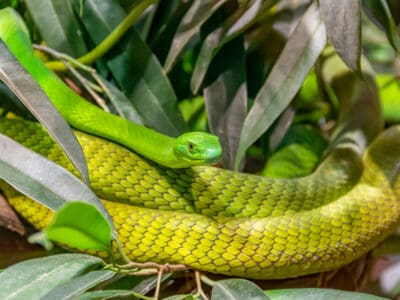Snake
There are around 4,000 known species worldwide, a number that is always changing.
Advertisement
Snake Scientific Classification
Read our Complete Guide to Classification of Animals.
Snake Conservation Status
Snake Facts

Snakes are a form of legless reptiles, covering over 4,000 different species around the world.
Also known by the scientific name Serpentes they are easily noticeable by their elongated body that seemingly looks like a head with a long tail. Their bodies are incredibly strong, though this strength is used for multiple purposes.
See all of our expert product reviews.
Snakes have a close relationship with lizards, which are also reptiles. While snakes have no eyelids or ear holes, they have become a well-loved pets by many eclectic owners. The serpent, a mythical symbol that is broadly known everywhere, is simply another term for it.
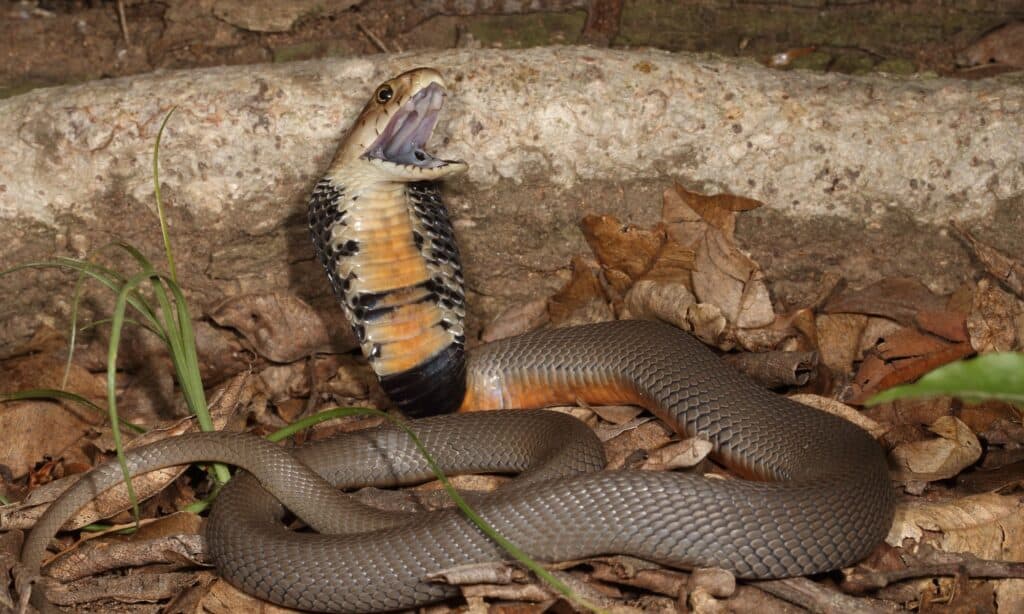
©NickEvansKZN/Shutterstock.com
5 Incredible Snake Facts!
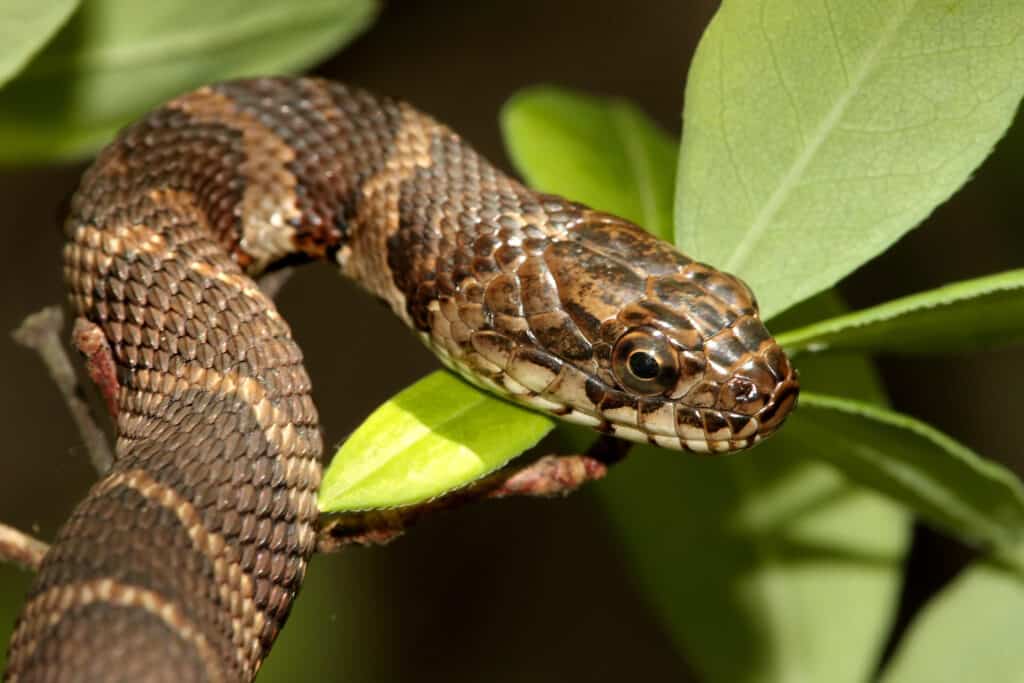
Snakes do not chew their food, despite the presence of teeth. Instead, they swallow it whole.
©Steve Byland/Shutterstock.com
Here are a few interesting facts about these reptiles:
Health and Entertainment for your Snake
See all of our expert product reviews.
- Out of over 4,000 different species, only 600 are venomous. Snakes like the gopher snake and kingsnakes are nonvenomous. Only 200 of these snakes have enough potency to harm a human.
- Though they are a reptile, like a lizard, they have no eyelids or ear holes.
- Snakes do not chew their food, despite the presence of teeth. Instead, they swallow it whole.
- These reptiles can be found on every continent but Antarctica.
- The snake to have lived the longest is located in Missouri and she is 62 years old.
Scientific Name
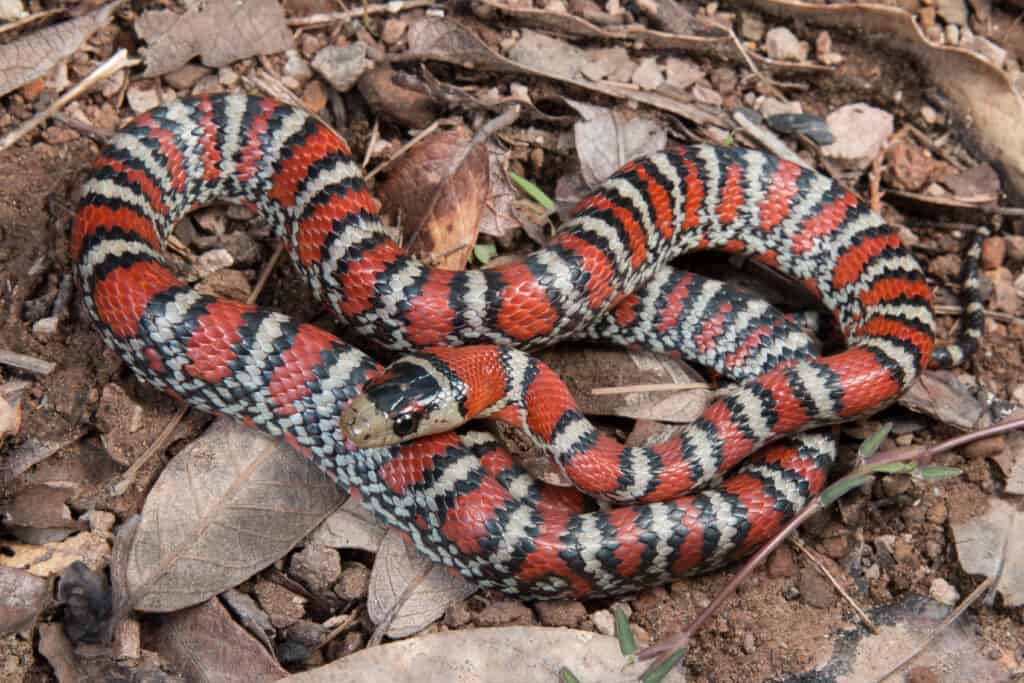
Snakes go by the scientific name
Serpentesand belong to the kingdom
Animaliaand Phylum
Chordata.
©Nathan A Shepard/Shutterstock.com
These reptiles go by the scientific name Serpentes and belong to the kingdom Animalia and Phylum Chordata. Their class is called Reptilia and the order is called Squamata. The clade is called Ophidia.
Serpentes, which is often shortened to the serpent in mythical stories, come from the Latin word “serpō,” which means “creep” or “crawl.”
Evolution and Origins
Snakes are a group of reptiles that evolved from lizards around 150 million years ago during the Late Jurassic period. They have evolved to have long, slender bodies and no limbs, allowing them to move efficiently through various habitats such as grasslands, deserts, and forests.
Snakes are thought to have evolved from terrestrial lizards, with their ancestors likely having four legs. Over time, snakes lost their limbs through a process of evolution known as reduction. This happens when certain body parts are no longer needed and become smaller until they eventually disappear.
Today, there are around 3,000 species of snakes found on every continent except Antarctica.
Appearance

Some snakes are as short as 4.1 inches (like the Barbados thread snake), though the longest snake in the world (which is the reticulated python) is over 20 feet long.
©Patrick K. Campbell/Shutterstock.com
Snakes are reptiles, but they noticeably have no legs. However, not every legless reptile is known as a snake.
Seemingly, the only components of a snake are its head and its tail, which take up the entire length of its body. Some snakes are as short as 4.1 inches (like the Barbados thread snake), though the longest snake in the world (which is the reticulated python) is over 20 feet long.
The teeth of these reptiles will vary by species as well. Many species have several needle-sharp teeth, but venomous species have fangs. Venomous snakes typically store the venom in glands the in the head behind their eyes. Only about 600 snake species are venomous. A snake, sometimes referred to as a serpent, has no earholes, but its ears are internal.
These reptiles are covered in scales, though they have skin like humans underneath them. Some snakes have keeled scales with a ridge down the center of each scale, and others have smooth scales. The markings are determined by the species, but there is hardly a color that you won’t see.
The color is sometimes a sign of how dangerous the snake is, but the pattern will help differentiate the threats from harmless animals. Snakes come in every color of the rainbow, including red, green, yellow, blue, and black.
Rattlesnakes have a large rattle at the end of their tail, which emits a loud noise to let animals and humans keep away. It is also important to note that there are some animals that look like snakes, but aren’t.
The body of the animal is also indicative of the way that the snake hunts. Animals with long and thin bodies are usually more active hunters, often chasing down their prey; while short yet thick snakes typically sit and wait for their prey.
Read here to learn more about the anatomy of snakes. Also, read here to learn about the most colorful snakes in the world.
Some snakes look like dragons. Read here to find out about them.
Behavior

When it comes to hunting, snakes have an incredible sense of smell that they rely on. As they flick out their tongue, they seek out the chemicals in the air.
©reptiles4all/Shutterstock.com
When it comes to hunting, snakes have an incredible sense of smell that they rely on. As they flick out their tongue, they seek out the chemicals in the air. Other snakes will use their ability to detect body heat. Constriction and venom tend to be the main ways that the prey is overpowered.
These reptiles seek out the right environment to keep their body warm since their cold-blooded body is unable to regulate their temperature internally. Snakes move back and forth between warm and cool areas, depending on their needs.
Snakes shed their skin as they grow; many shed 2-4 times per year. The shedding process can be rather uncomfortable, but it is a healthy process that reptiles undergo.
Though some species produce venom, the majority do not. Only 600 species have any kind of venom, and only a third of those venomous snakes have the capacity to wound humans at all, and even fewer can fatally kill them. Learn about the toughest animals in the world here.
Though humans are not a natural part of the reptile’s diet, it will bite if it feels threatened. In certain species, this bite can be fatal. There are scary and dangerous species in the world, the most lethal being the saw-scaled viper, killing more humans than any other species.
Read about the most dangerous animals on earth to humans here.
Common Types of Snakes

Like all pythons, the African Rock Python is non-venomous. It kills by constriction, ambushing, and coiling around its prey.
©zaferkizilkaya/Shutterstock.com
The following list includes some common types of snakes found around the world:
- Pythons – Pythons are a family of snakes consisting of 42 total recognized species. These reptiles can be found mostly in Asia, Australia, and Africa; however, the Burmese python was introduced in the Florida Everglades and is currently considered an invasive species. Most species in this family are “ambush predators” meaning they remain motionless and strike as prey passes.
- Elapids – Most elapids are commonly referred to as “cobras;” however, not all elapids are cobras. These snakes are characterized by erect, venomous fangs at the front of their mouths, and species can be terrestrial or aquatic. Elapids are endemic to tropical and subtropical regions throughout the world.
- Rattlesnakes – Rattlesnakes are found on the American continent and are characterized by the rattle at the end of their tails which they use to scare off predators. Although rattlesnakes rarely attack humans unless provoked, rattlesnake bites are the leading cause of snakebite injuries in North America. They are an example of pit vipers of the Viperidae family of snakes.
- Garters – Garter snakes are generally harmless in North and Central America. These snakes were long believed to be non-venomous, but recent studies have determined that they produce a neurotoxic venom that is too mild to injure or kill a human.
Additional types of snakes include:
- Cobras
- King cobra
- Vipers
- Anaconda
- Green anaconda
- Ball python
- Grass snake
- Titanoboa
- Kingsnakes
- Corn snake
- Boa constrictor
- Colubrid Snakes
- Inland taipan
- Acrochordus arafurae
- Mambas
- Black mamba
- Boas
- Coral reef snakes
- Taipan
- Eastern brown snake
- Red-bellied black snake
- Boomslang
- Elapid snakes
- Emerald tree boa
- Queen snake
- Brahminy blind snake
- Xenopeltis unicolor
- Elephant trunk snake
- Blind snakes
- Acrochordus granulatus
- Malpolon monspessulanus
- Sunbeam snakes
- Mole snake
- Gigantophis garstini
- Cylindrophis ruffus
- Typhlopidae
- Lamprophis
- Najash rionegrina
- Ninia
- Amblyodipsas
- Anilius
- False cobra
- Sharp-tailed snakes
- Alethinophidia
- Mole Vipers
- Psammophis
- Uropeltidae
Habitat

Snakes are quite versatile, and many types work in the climates of the world.
©PaniYani/Shutterstock.com
Snakes are quite versatile, and many types work in the climates of the world. Though the only continent without snakes is Antarctica, there are a few countries that aren’t home to any native snakes, including Ireland, New Zealand, and Iceland. Alaska is one of the few states that also has no native species.
The typical habitat is just as broad as where they can live. In water-based and land-based environments alike, these reptiles can also be found in tropical areas. While the water moccasin and the water snake commonly live near and in water, most snakes live on land. Based on the species, snakes can live in deserts, prairies, grasslands, and the rainforest.
Diet
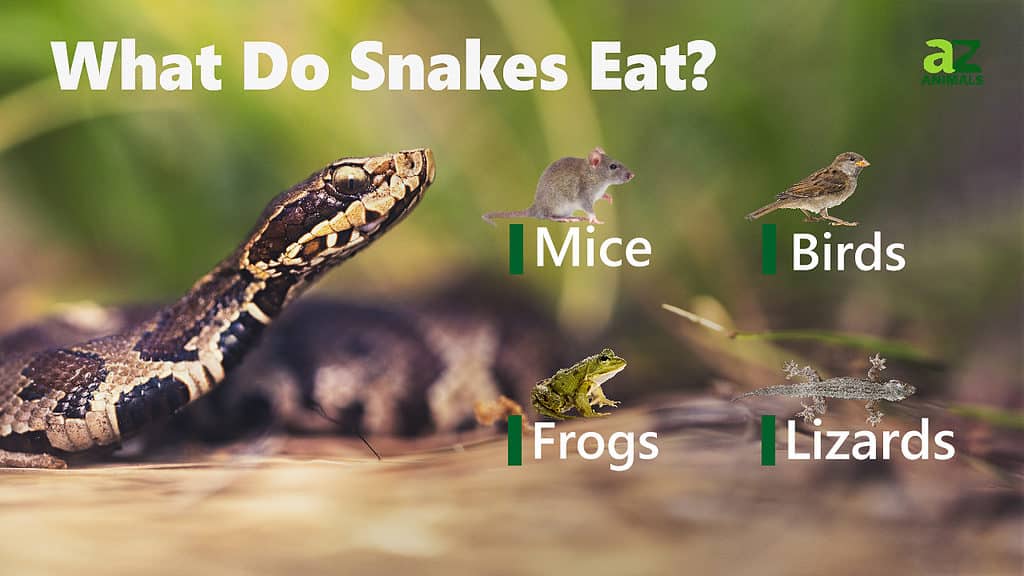
These reptiles have a carnivorous diet, meaning that their diet entirely consists of other animals. They can choose warm-blooded or cold-blooded animals, seeking out amphibians, insects, and mammals; some species feed exclusively on other snakes and lizards.
Though every snake will consume their prey whole, the way that they render them helpless varies. Boas and pythons will bite their prey to hold onto them, wrapping their body around and squeezing the life from the prey. If the animal has fangs, it will deliver venom to its prey. The venom comes from a sac that is hidden behind the eyes.
Predators and Threats

Snakes are relatively quick and effective predators, but they are also the prey of many different animals.
©Megan Czarnocki/Shutterstock.com
These reptiles are relatively quick and effective predators, but they are also the prey of many different animals. One of the biggest predators of these reptiles is humans because some people hunt them for meat, clothing, and many other purposes. However, snakes in general aren’t considered endangered.
The population of these reptiles can be negatively impacted by deforestation, hunting, and climate change. Ultimately, the threat that the snake faces is specific to many factors, like the species, where they live, and how much meat they provide. Learn about some snakes that are endangered here.
To learn about some snakes that don’t bite, read here.
What Eats Snakes?
These reptiles may be rather impressive hunters, but animals like large birds and coyotes have made these reptiles into a regular part of their diet.
They are also hunted by mongooses, wild boars, foxes, raccoons, and other game that can pick them up and consume them. Some snake species prey on other snakes – king snakes, indigo snakes, and king cobras are good examples.
Luckily, each species has its own way to defend itself against threats. Camouflage plays a major role in their defense, hiding for additional coverage. Venomous species will bite as a last resort, but they generally try to flee instead.
What Do Snakes Eat?
Since all of these reptiles are carnivores, there are many small animals that can become their prey. The diet that the animal consumes is based on their species. Insects, amphibians, earthworms, slugs, fish, rodents, rabbits, and birds are all possible foods. Some snakes eat eggs.
Read here to discover some snakes that eat fish and some snakes that eat birds.
Reproduction, Babies, and Lifespan

Cobras eat other snakes but will eat birds
©Roberto 33/Shutterstock.com
The reproduction process of these reptiles is primarily a process of internal fertilization. Most species intertwine their bodies with that of their partner, and the male releases the sperm from one of the two organs it has. The female doesn’t necessarily become pregnant with her young right away; some females can store the male’s sperm for 2-5 years before fertilization.
The species will determine the type of birth that the female has. Rattlesnakes and garter snakes give birth to their babies as they live young, which makes them ovoviviparous. However, species like the ball python and the corn snake lay eggs, making them oviparous. In fact, approximately 70% of all these reptiles are oviparous, rather than ovoviviparous.
The number of eggs or live young will vary greatly. For snakes that give birth to live young, about 10-30 are born in each litter, though the diamondback water snake can have up to 40 babies in a litter.
The live-bearing females often find a sheltered spot where they give birth to the babies. For the species that lay eggs, the clutch size varies significantly. While the ball python may only lay a single egg, some clutches are up to 100 eggs annually.
The species of snake determine their lifespan. While smaller species (like the garter snake) live for less than ten years, the various types of boas can leave for about 25 to 50 years.
As of September 2020, the longest-living snake is a ball python who is currently 62 years old and lives in the St. Louis Zoo of Missouri.
Population
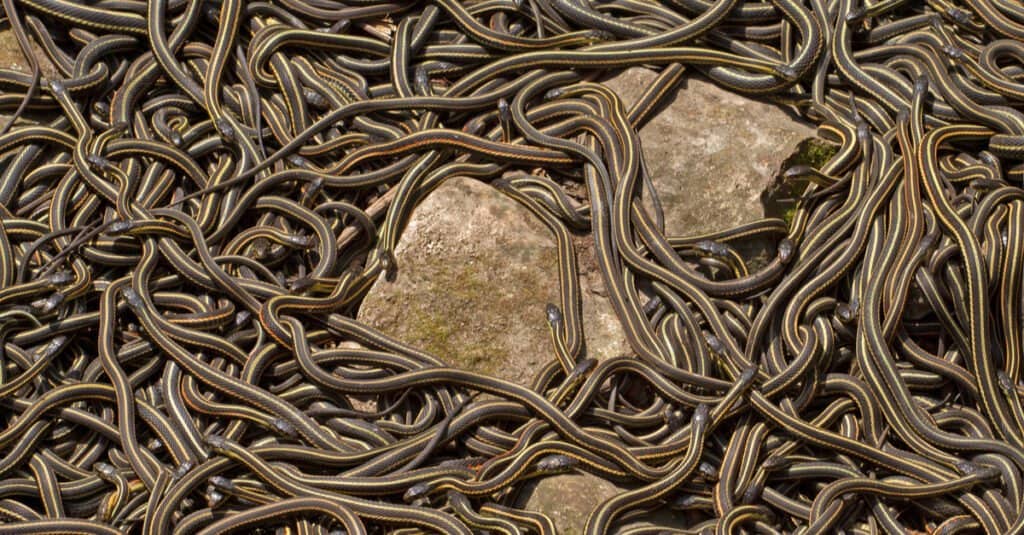
With over 4,000 types of snakes around the world, the total population varies from country to country.
©Jukka Palm/Shutterstock.com
With over 4,000 types of snakes around the world, the total population varies from country to country. Interestingly, there are a few countries that have no known native species of snakes at all, including Antarctica. Here is a compilation of pre-historic snakes.
Although most snakes are not dangerous to people, they are largely misunderstood and unpopular.
Though there are some species with lower populations, snakes (as a whole) are classified as “not extinct” by the IUCN. Here is a list of the most popular snakes in the world.
Read about the rarest snakes in the world here.
In the Zoo
These reptiles can be found at nearly every major zoo, allowing the public to become more informed of the types of this reptile that span across the globe. Most often, the zoos will include snakes that are local to their region, so the species will vary from one location to the next.
When visiting this reptile, most species will simply relax in their tank. However, some zoos (like the Virginia Living Museum) feature demonstrations outside of the tanks to allow patrons to get a closer look. With more awareness of and information about snakes, the fear typically associated with these animals can be reduced.
Snakes that live in zoos may not exhibit the same outward symptoms of illness that they show in the wild. Zookeepers are incredibly familiar with the behavior that these snakes show when they are ill, allowing them to get fast treatment when they become sick.
Some types of snakes can be kept as pets, like the corn snake or the rosy boa.
Read More
- Snakes that fit in a 20-gallon tank.
- Snakes that can Eat a Human.
- Snakes are vibrant creatures that display so many different colors. Discover the beauty of blue snakes or yellow snakes.
- Some snakes display the absence of color. Check out 12 white snakes!
- Snakes you actually want in your yard.
- The largest snakes that can be kept as pets.
- What the largest snakes in the world eat.
- The oldest known snakes in history.
- The largest rainbow snake ever found.
- The darkest snakes in the world.
- Take our Snake Quiz.
Types of Snakes
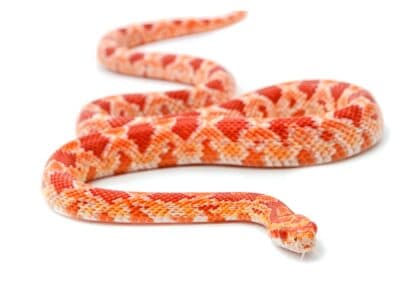
Albino (Amelanistic) Corn Snake
Albino corn snakes make great beginner snakes.
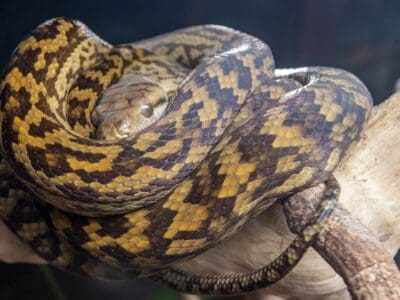
Amethystine Python (Scrub Python)
Their milky-iridescent scales have a purplish hue in the light, reminiscent of the gemstone.
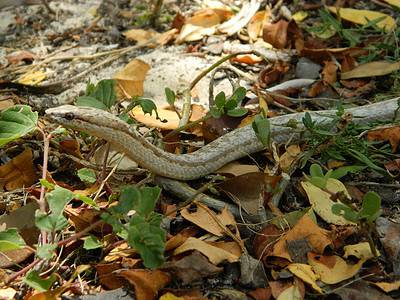
Antiguan Racer Snake
One of the most endangered snakes in the world

Arizona Black Rattlesnake
Female Arizona black rattlesnakes sometimes share parenting duties.
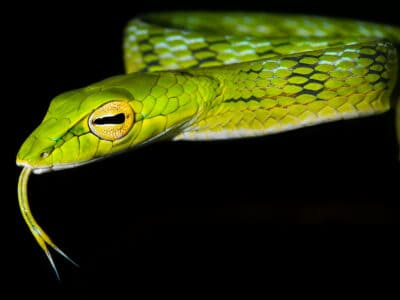
Asian Vine Snake
This snake chews on its victims to release venom.
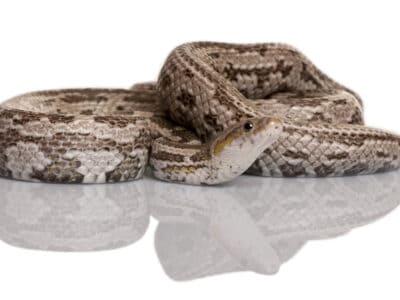
Baird’s Rat Snake
Baird’s rat snake subdues its prey through suffocation.

Banana Cinnamon Ball Python
Banana cinnamon ball pythons came from combining the banana and cinnamon genes.

Banded Krait
What often prevents more people from falling victim is that the banded krait does not always inject venom in a defensive bite. It saves the venom for hunting prey instead.
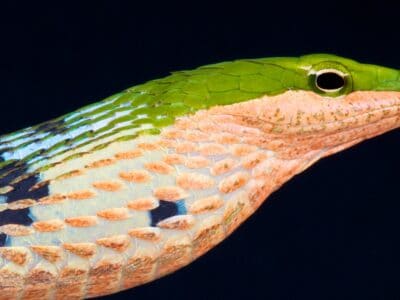
Bird Snake
Usambara vine snakes sit perfectly still and sway in the wind like a stick.
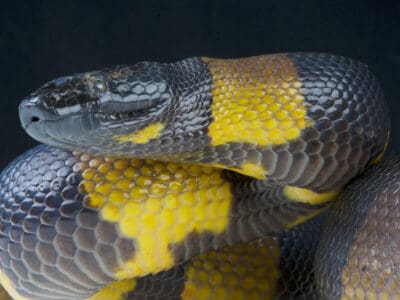
Bismarck Ringed Python
When these snakes are babies, they look like Halloween snakes with their bright orange and black bands.
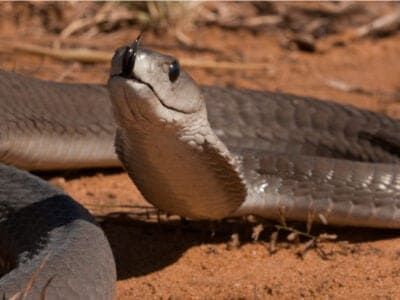
Black Mamba
Black mambas are the longest venomous snake in Africa, and second longest in the world.
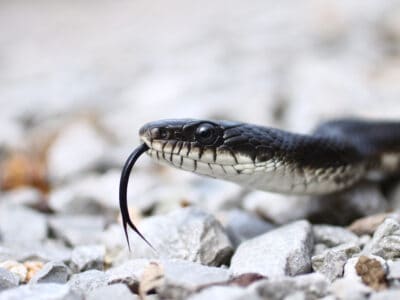
Black Rat Snake
They're also called black pilot snakes due to a myth that they "pilot" venomous snakes to a den where they can go into brumation for the winter.
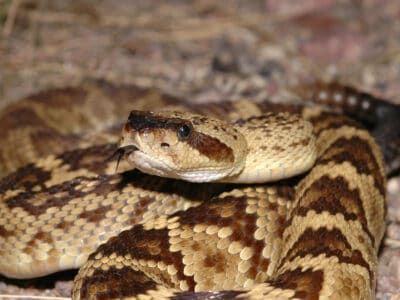
Black-Tailed Rattlesnake
One of the most beautiful rattlesnakes, they have solid black tails.
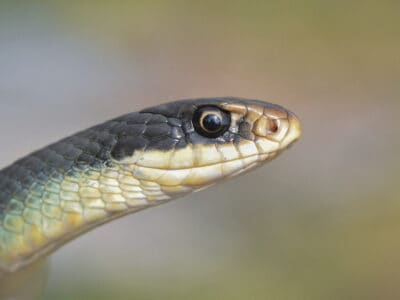
Blue Racer
Some blue racers have smooth scales that are solid electric blue while others are grayish or brownish.
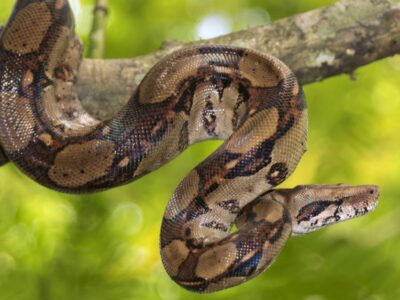
Boas
Boas are considered primitive snakes and still have vestigial legs, called spurs.
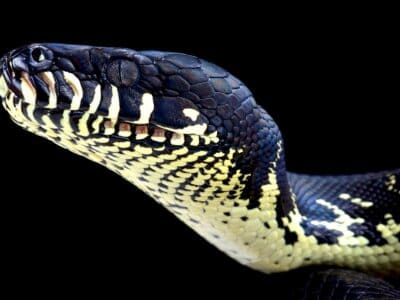
Boelen’s python
A single hatchling can go for over $5,000 as a pet.

Bredl’s Python
These snakes love to climb trees, and young snakes often hide high in the branches.
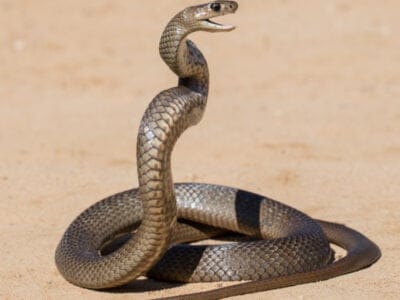
Brown Snake
Causes the most snake bite deaths in Australia!

Brown Tree Snake
People have reported seeing these snakes in Texas, Oklahoma, and Hawaii, but this has never been proven!
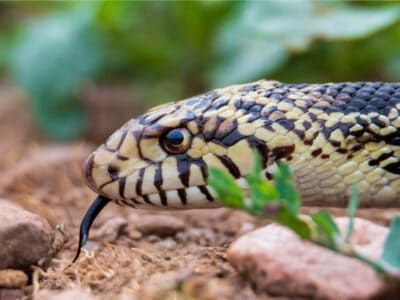
Bullsnake
Considered “The farmer’s friend” because it eats mice and other vermin.
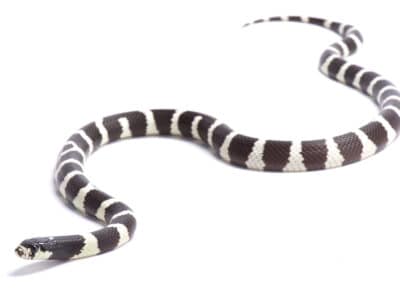
California Kingsnake
A full-grown California kingsnake can be about 3.5 feet long, though there are some cases in Mexico of the snake being almost twice this size.
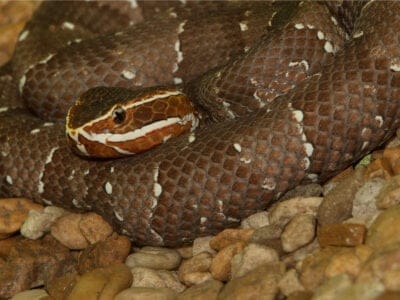
Cantil
Cantils heads are marked with bright white lines on each side of their heads.
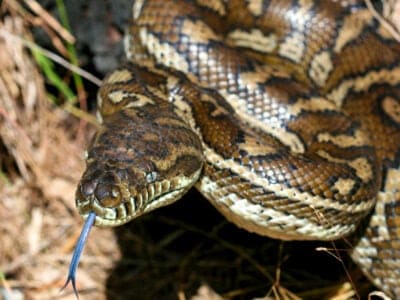
Carpet Python
Carpet pythons are popular pets because of their calm temperament.
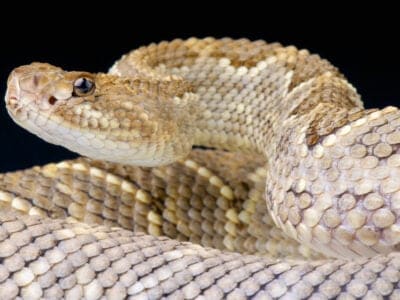
Cascabel
Cascabels rely on their camouflage first, and rattle if that doesn't work.
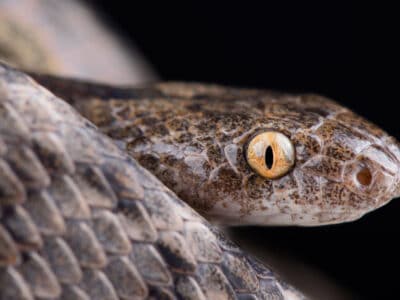
Cat Snake
Some cat snakes have a prehensile tail that helps them climb into trees.
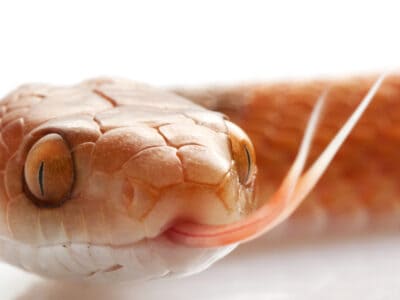
Cat-Eyed Snake
Evidence indicates that females can delay fertilization and store sperm for later years to produce eggs even in the absence of contact with a male!
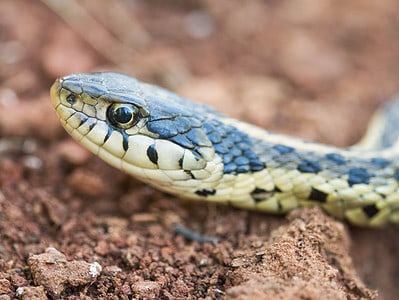
Checkered Garter Snake
It has the ability to expel a stinky liquid from its body as a way to make predators (and humans) retreat!
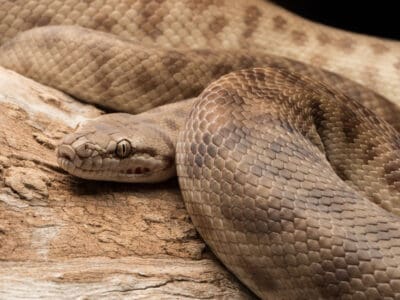
Children’s python
These snakes come in a wide variety of patterns and colors.
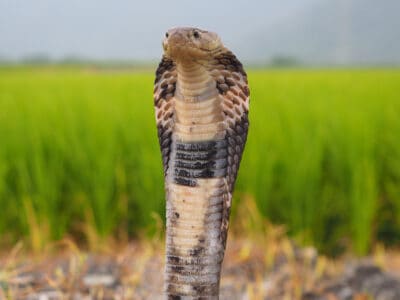
Chinese Cobra
Juvenile Chinese cobras have the ability to start hunting almost from the moment they hatch from the eggs.
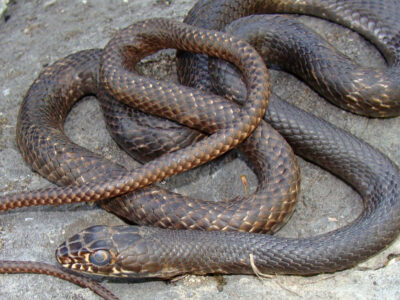
Coachwhip Snake
Coachwhip snakes pose little danger to people
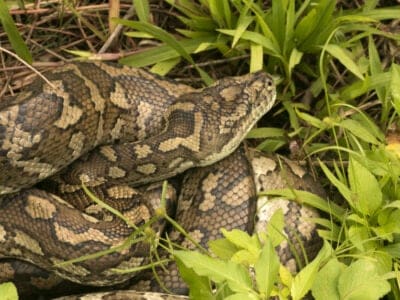
Coastal Carpet Python
This subspecies can reach 13 feet, but usually tops out at 9 or 10.
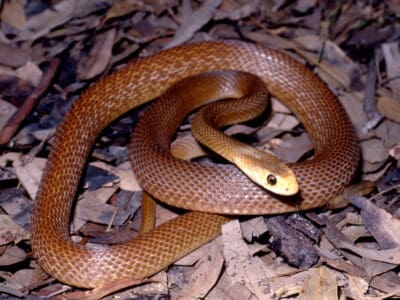
Coastal Taipan
The venom in its bite starts to have adverse effects on a human within 30 minutes

Cobras
Several medicines have been created using cobra venom.

Collett’s Snake
Collett’s snake is beautiful but almost as dangerous as a mulga snake.

Common European Adder
European adders are the only snake that lives above the Arctic Circle.

Coral Snake
There are over 80 species of coral snake worldwide.
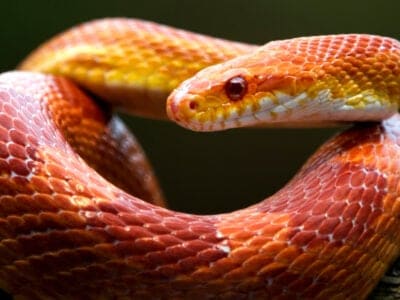
Corn Snake
Corn snakes are partly arboreal and are excellent climbers.

Cow Reticulated Python
Cow reticulated pythons hatch solid white, then develop spots as they mature.
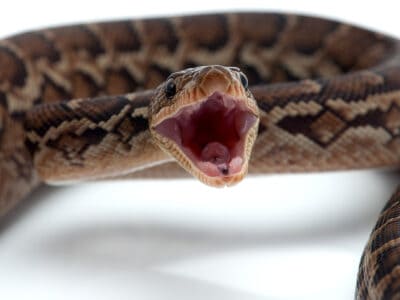
Cuban Boa
One of the only snakes observed using cooperative hunting tactics.
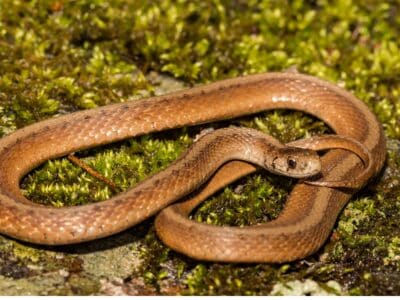
De Kay’s Brown Snake
They have specialized jaws for removing snails from shells.

Death Adder
The Death Adder is more closely related to the Cobra than other Australian snakes.
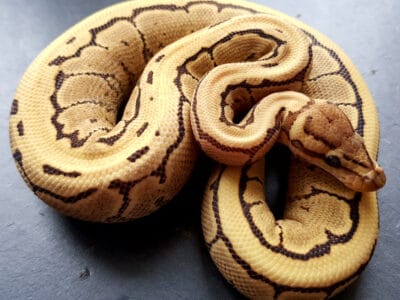
Desert Ghost Ball Python
Desert ghost ball pythons are even more beautiful when they're bred with another type like enchi ball pythons.
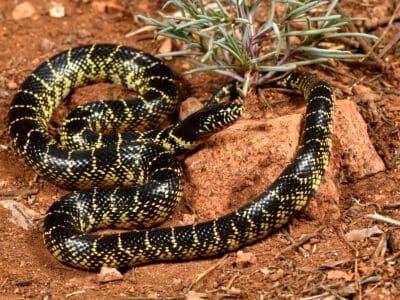
Desert Kingsnake
The desert kingsnake rolls over and plays dead when it feels threatened.

Diamond Python
These pythons live at higher altitudes and further south than any other python species.
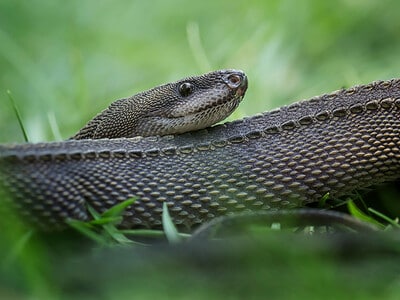
Dragon Snake (Javan Tubercle Snake, Javan Mudsnake)
Sport three rows of raised dorsal scales
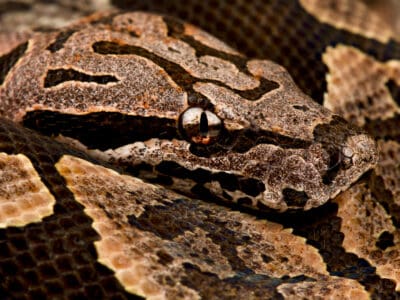
Dumeril’s Boa
Some tribes believe that the snake's skin holds the souls of their ancestors.
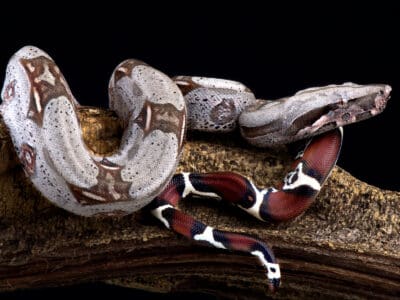
Dwarf Boa
Some species can change color from dark to light, and back again.
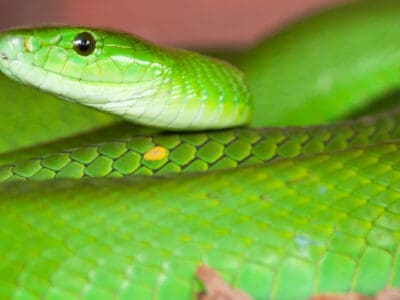
Eastern Green Mamba
It is completely arboreal, and its green color is one of the adaptations that make life in the trees possible.

Eastern Hognose Snake
Eastern hognose snakes are venomous, but only to frogs and toads.

Eastern Tiger Snake
More than 10 percent of eastern tiger snakes are blind in at least one eye.
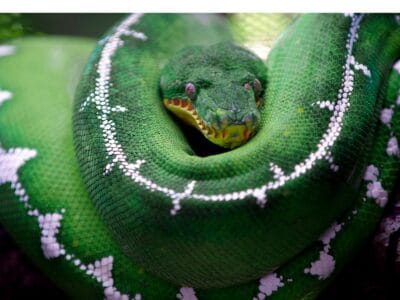
Emerald Tree Boa
Their teeth are as long as a fully-grown reticulated python
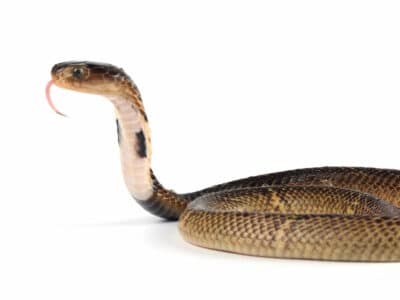
Equatorial Spitting Cobra
Its hood is actually made of many elongated ribs.

False Cobra
When it feels threatened, it mimics a cobra in an attempt to dissuade a potential attacker.
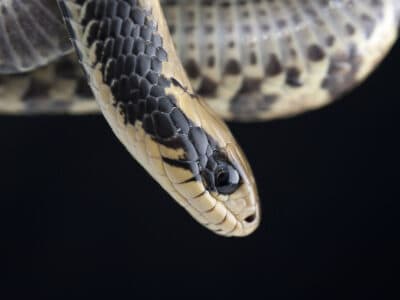
False Water Cobra
There are several color morphs, including lavender!
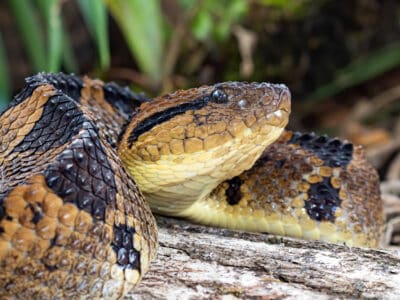
Fer-de-lance Snake
The Most Dangerous Snake in the Americas

Fierce Snake
It can kill multiple humans with the amount of venom it releases in one bite.

Fire Ball Python
The fire ball python morph is known for its rich golden and reddish-brown coloration.
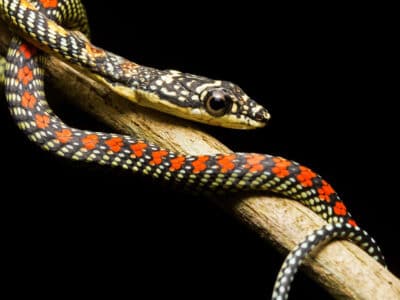
Flying Snake
Flying snakes are the only gliding limbless vertebrates or animals with a backbone!
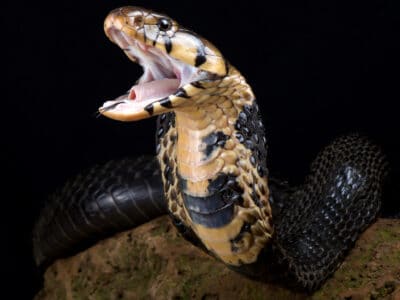
Forest Cobra
There are three different color morphs, which entirely depend on the region that they live in.
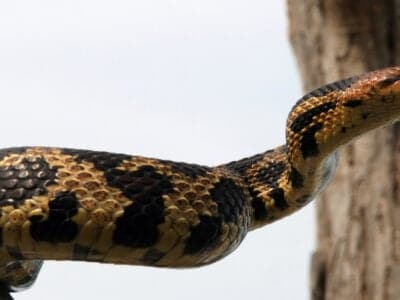
Fox Snakes
In some areas, fox snakes and gopher snakes have crossbred in the wild.

Freeway Ball Python
Freeway ball pythons come from breeding yellow belly and asphalt ball pythons.

Golden Lancehead
Golden lancehead snakes climb trees to prey on birds.
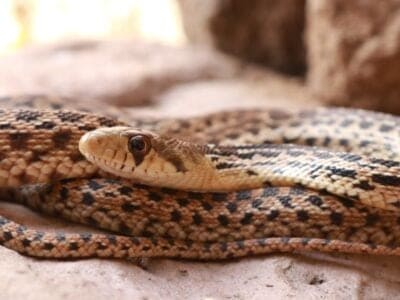
Gopher Snake
Gopher snakes can reach up to 9 feet long.
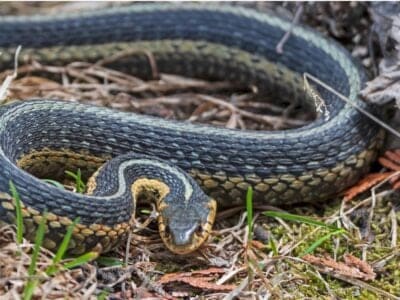
Grass Snake
Use acute hearing to hunt
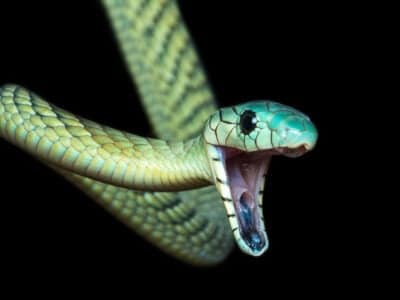
Green Mamba
Green mambas are fast, and can travel up to 7 miles per hour.

Green Snake
There are two types of green snakes: smooth green snakes and rough green snakes
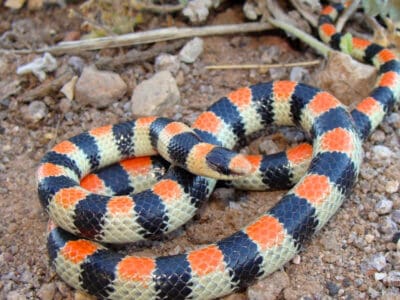
Ground Snake
It’s sometimes called a miter snake due to the marking on its head that looks like a bishop’s miter

Habu Snake
Unlike most pit vipers, the habu snake lays eggs instead of giving birth to live young.
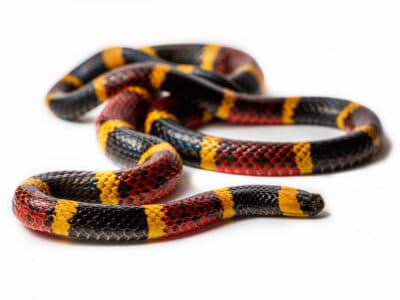
Harlequin Coral Snake
Red touches yellow kills a fellow, red touches black a friend of Jack.

Horned Adder
Males tend to be more brightly colored than females, and females are significantly bigger than males.
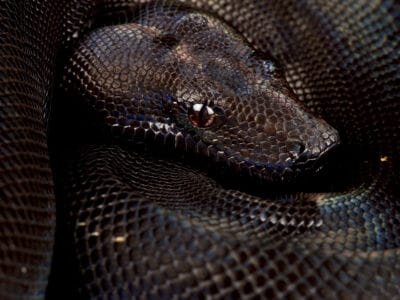
IMG Boa Constrictor
The first IMG boa was born in a litter of anerythristic boas.
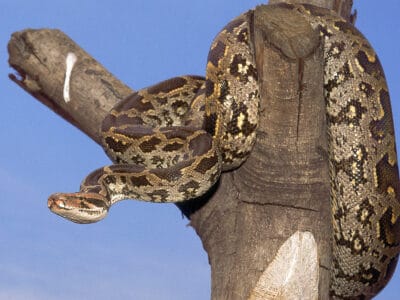
Indian python
Kaa from Rudyard Kipling's The Jungle Book was an Indian Python.

Indigo Snake
Indigo snakes use brute force to overpower their prey.

Inland Taipan
A single inland taipan bite has enough venom to kill a hundred men.
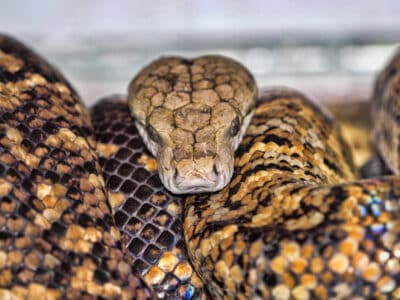
Jamaican Boa
When a Jamaican boa is coiled up, it almost looks like two snakes together because of color pattern.

Jungle Carpet Python
Their stunning coloration is sometimes muddy yellow or even tan and black in the wild.
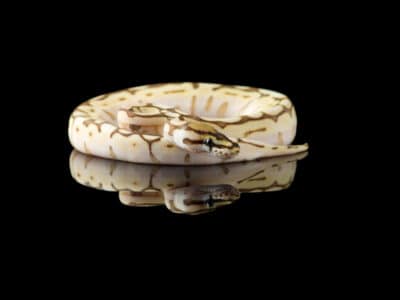
Killer Clown Ball Python
Killer clown ball pythons can cost several thousand dollars.
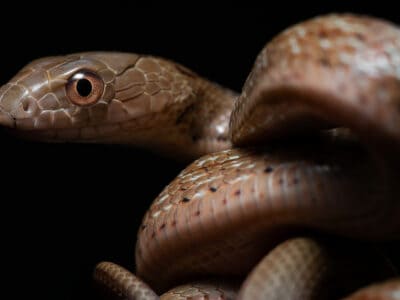
King Rat Snake
When threatened or frightened, the king rat snake has the ability to produce a foul-smelling substance out of self defense.
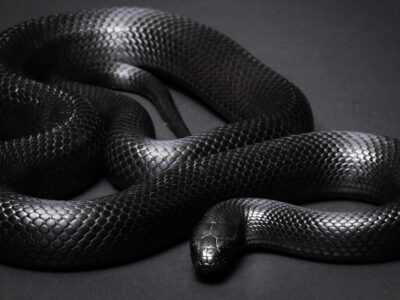
King Snake
King Snakes eat other types of snakes.
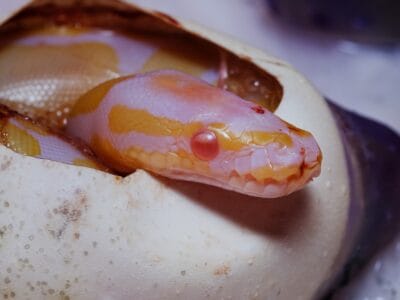
Lavender Albino Ball Python
The first two lavender albino ball pythons were wild-hatched and imported from Africa.
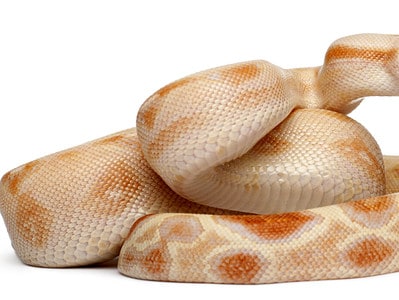
Lipstick Albino Boa
Lipstick albino boas are a designer morph that you'll only find from breeders.
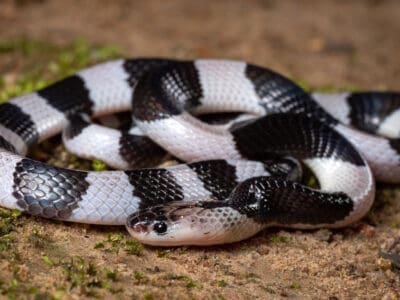
Malayan Krait
It's called the five-step snake because if a person is bitten, they can walk about five steps before dying.

Mamba
The black mamba is land-dwelling while the other three mamba species are tree-dwelling.
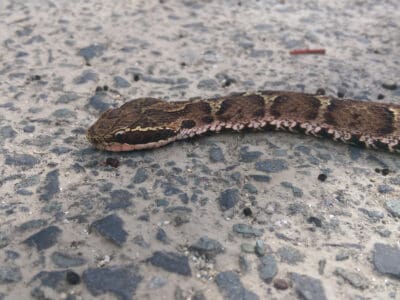
Mamushi Snake
The Mamushi snake, which is also known as the Japanese moccasin or the Japanese pit viper, can grow to be over two feet long.
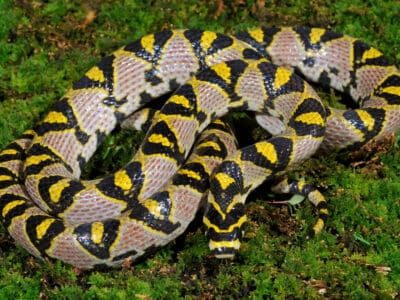
Mandarin Rat Snake
"This docile snake is a popular and long-lived pet - though challenging to care for - with a lifespan of up to 21 years!"

Mangrove Snake
Mangrove snakes have small fangs that are more like enlarged teeth at the back of their jaw.

Mexican Black Kingsnake
A subspecies of the common kingsnake
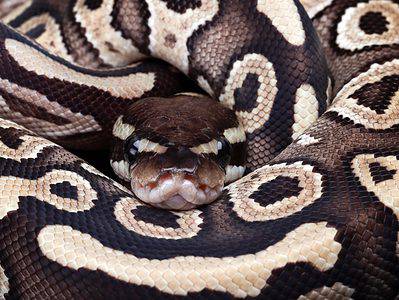
Mojave Ball Python
Instead of the typically banded or ‘alien head’ patterning of most ball python morphs, the Mojave morph’s patterning is characterized by lots of large, circular splotches with small, dark brown dots in their centers.
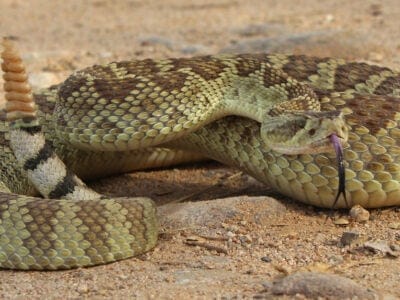
Mojave Rattlesnake
"The Mojave rattlesnake is the most venomous rattlesnake in the world."
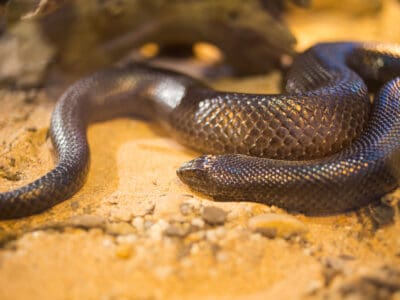
Mole Snake
“The mole snake can reach a length of 6.8 feet”
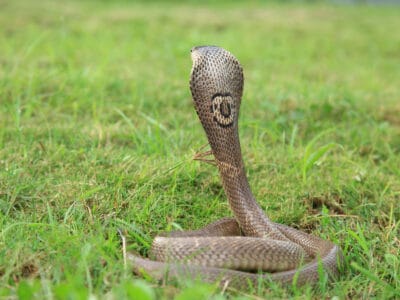
Monocled Cobra
The monocled cobra is responsible for the highest fatality rate of any snake in all of Thailand.
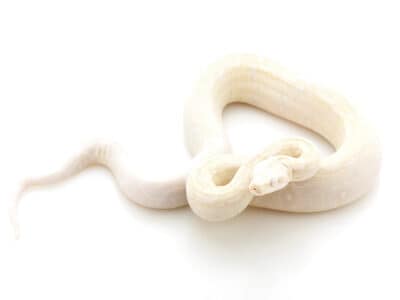
Moonglow Boa
Moonglow boas are the result of mixing three genetic traits.

Mussurana Snake
Mussurana snakes help keep rodents from overrunning farms.
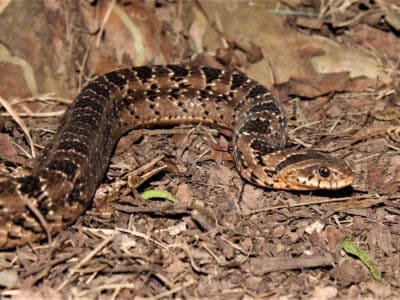
Night Adder
Night adders are small, slender snakes that, despite the name, are actually most active during the day.

Oenpelli python
Oenpelli pythons are unusually thin for a python.

Olive python
The olive python is a gentle giant that is rarely aggressive.

Orange Dream Ball Python
The "Orange Dream" name came from the idea that the morph would make its first breeder a million dollars.
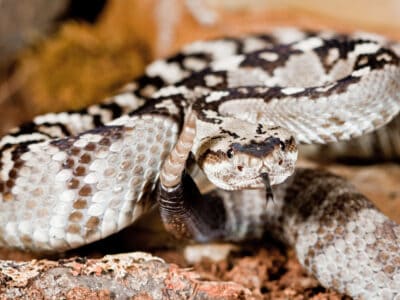
Ornate Black-Tailed Rattlesnake
Ornate black-tailed rattlesnake mothers stay with their newborn babies for up to a month.
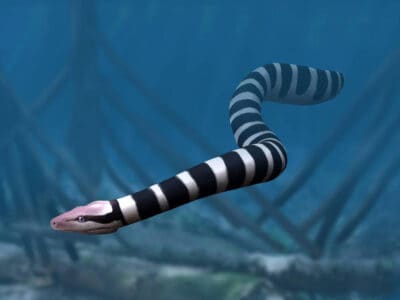
Palaeophis
This snake was as long as a school bus!

Panda Pied Ball Python
The panda pied ball python morph is a combination of the piebald and black pastel traits.
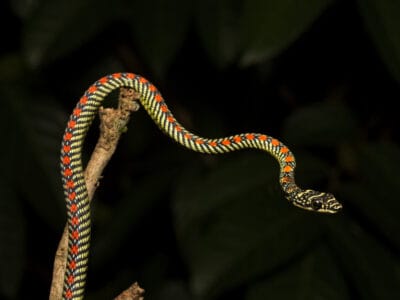
Paradise Flying Snake
Paradise Flying Snakes can glide over 100 yards!
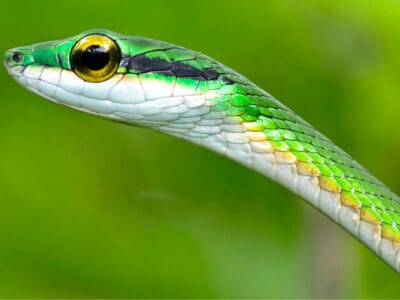
Parrot Snake
The parrot snake shows off with bright green and bronze colors that cover its entire body.
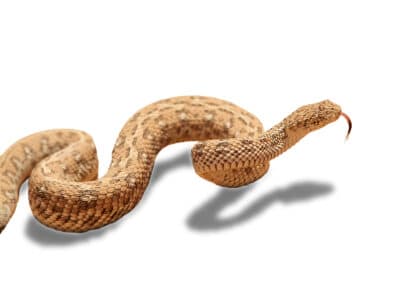
Peringuey’s Adder
Peringuey's adders' eyes are nearly on the tops of their heads!
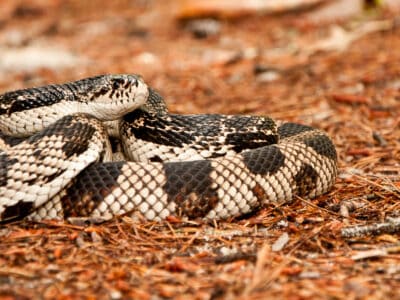
Pine Snake
Pine snakes bluff with the best, trying to scare you away.

Pipe Snake
Some of these snakes flatten their neck and raise their heads to imitate cobras if they’re threatened.
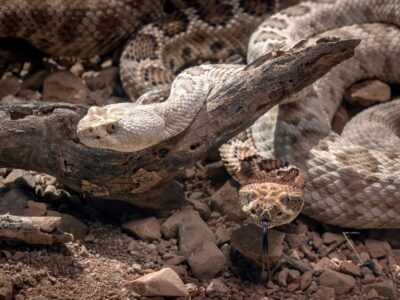
Pit Viper
Pit vipers's fangs fold up into their mouths when they don't need them.

Plains Hognose Snake
The plains hognose snake gets its name from the upturned end of its snout.

Pygmy python
These snakes have been seen traveling as group of 3-5.

Pygmy Rattlesnake
Pygmy rattlesnakes’ rattle is so small it can only be heard from about three feet away.
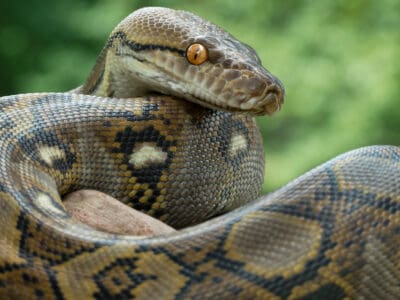
Python
Female pythons lay eggs and defend them until they hatch.
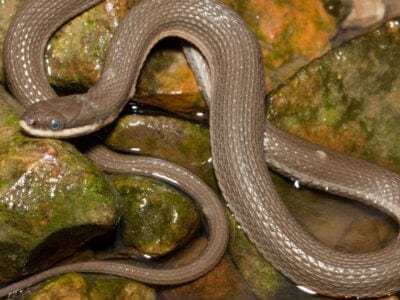
Queen Snake
Queen snakes have armor-like scales on the top of their head

Rat Snakes
Rat snakes are constrictors from the Colubridae family of snakes.

Red Diamondback Rattlesnake
A rattlesnake can shake its rattle back and forth 20-100 times per second.

Red Spitting Cobra
Scientists believe that the red spitting cobra evolved from injecting venom to spitting it in response to the constant threat of early humans
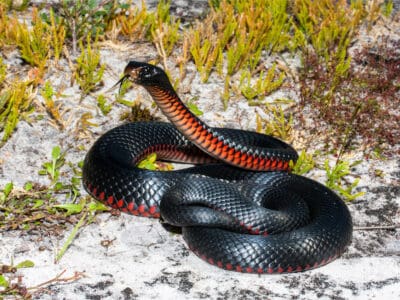
Red-Bellied Black Snake
These snakes are the only ones in the genus Pseudechis to give birth to live offspring.
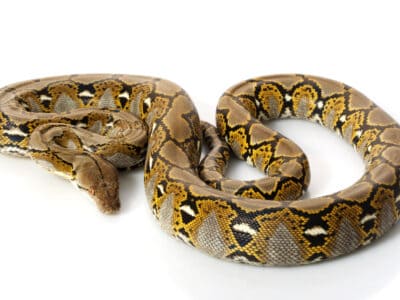
Reticulated python
These popular pets can get big enough to kill their owner.

Rhino Viper
The river jack snake has a gigantic horn-like scale on the tip of its nose.
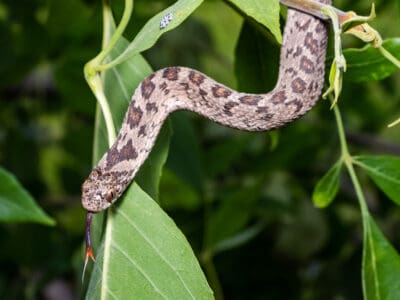
Rhombic Egg-Eater Snake
When birds aren't nesting, these snakes fast
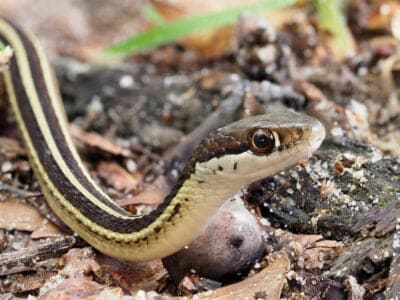
Ribbon Snake
Ribbon snakes love water, but are excellent climbers too.
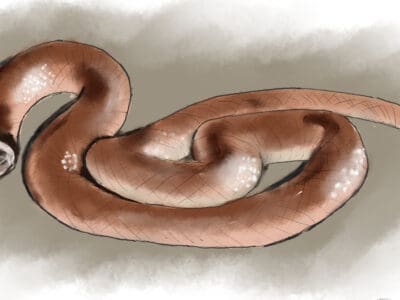
Rim Rock Crowned Snake
Rim rock crowned snakes made news in 2022 when a hiker discovered one of these rare snakes had died while attempting to swallow a centipede!
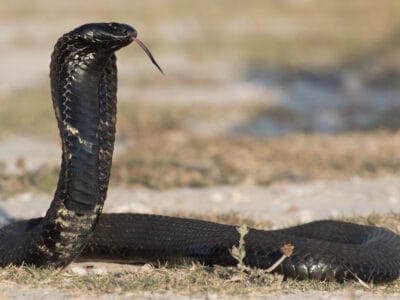
Rinkhals Snake
This snake is known for playing dead as a defense against predators.
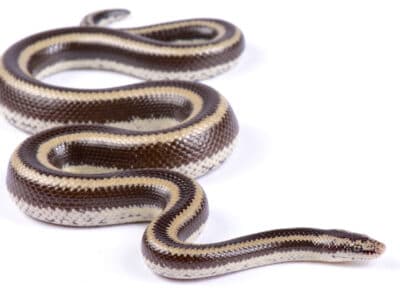
Rosy Boa
One of the few snakes that naturally comes in a rainbow of colors!

Rough Earth Snake
It has a pointed snout that is uses to burrow into moist soil.
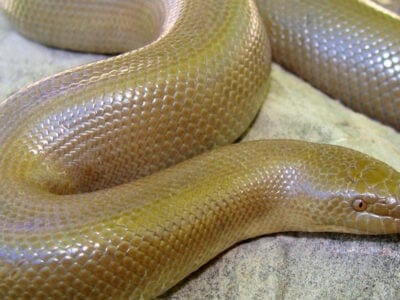
Rubber Boa
Rubber boas are one of North America’s only boa species.

Russel’s Viper
A Russel's viper strike is so forceful it can lift its entire body off the ground.
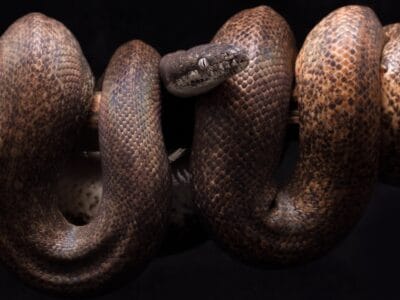
Savu Python
Before ball pythons' morphs became popular, Savu pythons were everywhere in the pet trade.
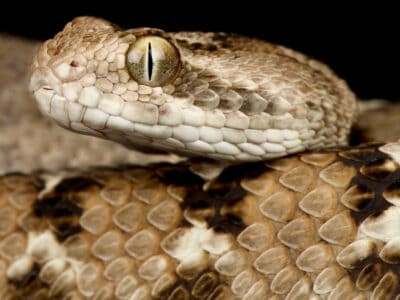
Saw-scaled Viper
This is the smallest venomous snake in India's Big Four.
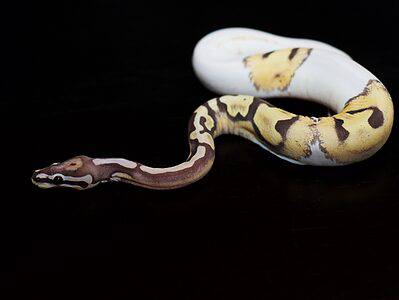
Scaleless Ball Python
Aside from the ocular scales covering each of its eyes, the scaleless ball python's body is completely smooth.
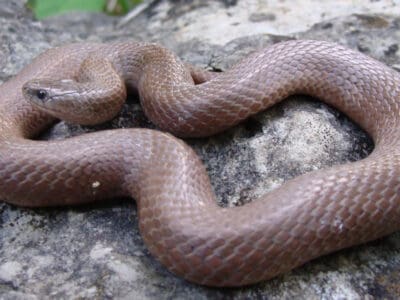
Smooth Earth Snake
Valeria Biddle Blaney (1828-1900) collected the first specimen in Maryland.

Smooth Snake
These snakes are sometimes confused with common adders, but lack the zigzag pattern.

Southern Black Racer
These snakes live underground, beneath piles of leaf litter or in thickets, and they are expert swimmers.

Spider Ball Python
The spider ball python is known for having a head wobble.

Spiny bush viper
These shaggy snakes are only 2 feet long and mostly arboreal.
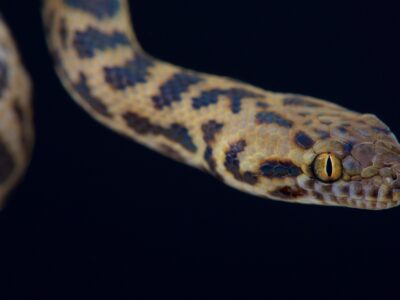
Spotted python
Their favorite food is bats and they hang from cave entrances to snatch them out of midair!

Sunbeam Snake
Sunbeam snakes have two lungs instead of just a single lung like most snake species.

Sunset Ball Python
Sunset ball pythons are bred with several other morphs to get designer colors.

Tasmanian Tiger Snake
The Tasmanian tiger snake gets its name from their banded skin, closely resembling a tiger's stripes.

Tentacled Snake
Their tentacles have nerves that attach directly into the area of the brain that processes visual information.
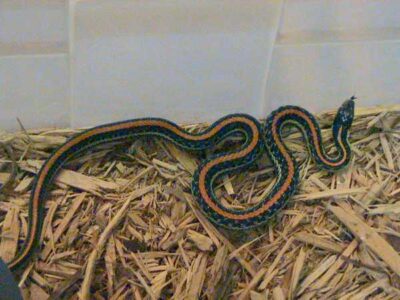
Texas Garter Snake
These snakes defensively emit a foul-smelling musk if you handle them!

Texas Indigo Snake
Texas Indigo Snakes are known for chasing down, overpowering, and eating rattlesnakes.

Tiger snake
Tiger Snakes can spend nine minutes underwater without returning to the surface to breathe

Timber Rattlesnake (Canebrake Rattlesnake)
Timber rattlesnakes are the snake on the Gadsden Flag.
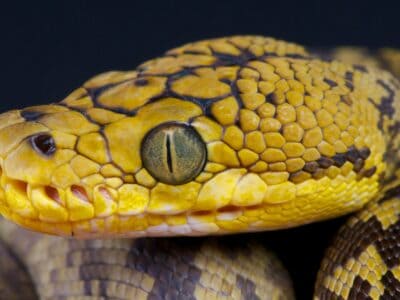
Timor python
Ironically, Timor pythons have never been found on the island of Timor.

Tree Snake
Though this snake’s venomous bite isn’t harmful to adults, it can be dangerous to children
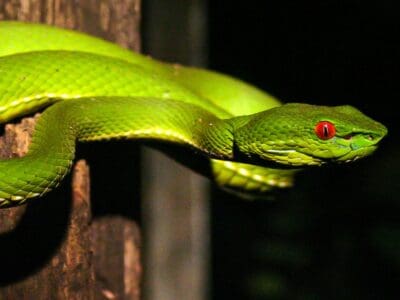
Tree Viper (Bamboo Viper)
Pit vipers can strike accurately at moving objects less than .5 degrees Farenheit warmer than the background.
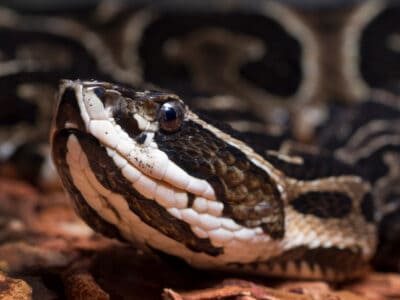
Urutu Snake
The female Urutu snake grows longer and heavier than males of the same species

Viper
Vipers are one of the most widespread groups of snakes and inhabit most
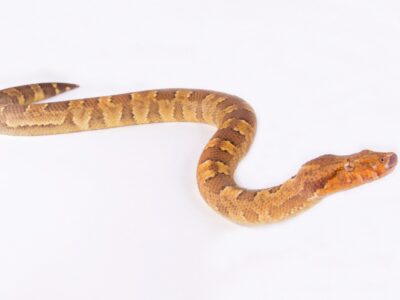
Viper Boa
These boas aren't really vipers, they're nonvenomous constrictors that look like vipers.

Western Diamondback Rattlesnake
They replace their fangs 2-4 times per year!

Western Rat Snake
Western rat snakes have special scales on their belly that help them climb up trees.
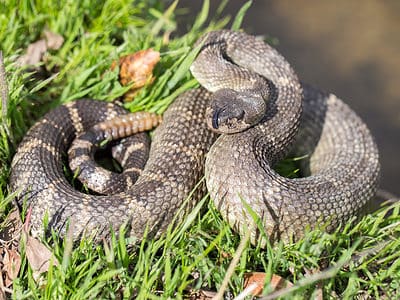
Western Rattlesnake (Northern Pacific Rattlesnake)
Western rattlesnakes are shy and try to avoid people whenever possible.
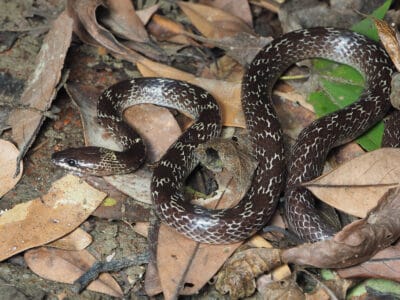
Wolf Snake
Harmless, but with fangs like a wolf.
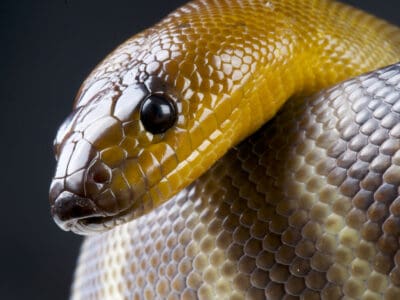
Woma Python
Woma pythons often prey on venomous snakes and are immune to some venoms.
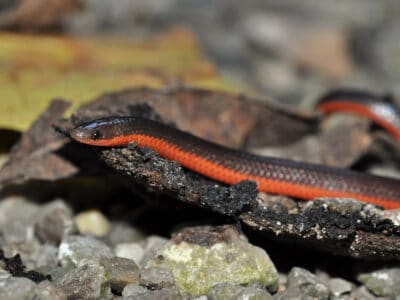
Worm Snake
They emit a bad-smelling liquid if they are picked up!
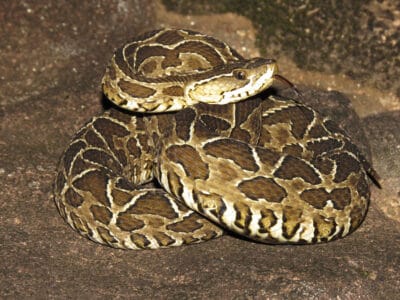
Yarara
Females are much larger than males
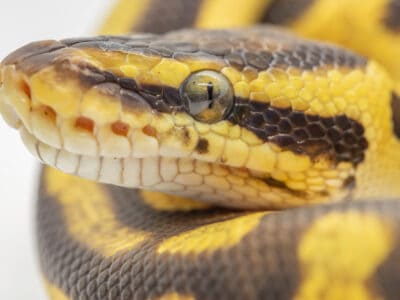
Yellow Belly Ball Python
The yellow belly gene is co-dominant and doesn't completely override other genes.

Yellow-Bellied Sea Snake
Sea snakes spend approximately 90% of their lives under water.

Zebra Snake
The zebra snake is a black-hooded species of spitting cobra native to several of the southern countries of Africa.
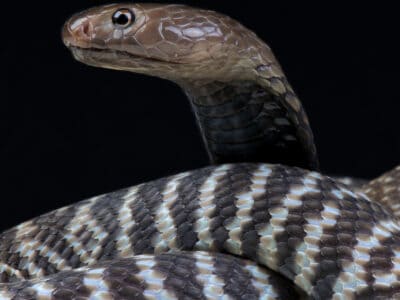
Zebra Spitting Cobra
This snake can spit a distance of nine feet or further!
List of Snakes
- Agkistrodon Contortrix
- Albino (Amelanistic) Corn Snake
- Amethystine Python (Scrub Python)
- Antiguan Racer Snake
- Arizona Black Rattlesnake
- Asian Vine Snake
- Baird’s Rat Snake
- Ball Python
- Banana Cinnamon Ball Python
- Banded Krait
- Bird Snake
- Bismarck Ringed Python
- Black Mamba
- Black Pastel Ball Python
- Black Rat Snake
- Black-Tailed Rattlesnake
- Blue Racer
- Boas
- Boelen’s python
- Boiga
- Bredl’s Python
- Brown Snake
- Brown Tree Snake
- Bullsnake
- California Kingsnake
- Cantil
- Carpet Python
- Cascabel
- Cat Snake
- Cat-Eyed Snake
- Checkered Garter Snake
- Children’s python
- Chinese Cobra
- Coachwhip Snake
- Coastal Carpet Python
- Coastal Taipan
- Cobras
- Collett’s Snake
- Common European Adder
- Congo Snake
- Coral Snake
- Corn Snake
- Cow Reticulated Python
- Cuban Boa
- De Kay’s Brown Snake
- Death Adder
- Desert Ghost Ball Python
- Desert Kingsnake
- Diamond Python
- Dragon Snake (Javan Tubercle Snake, Javan Mudsnake)
- Dumeril’s Boa
- Dwarf Boa
- Eastern Brown Snake
- Eastern Green Mamba
- Eastern Hognose Snake
- Eastern Tiger Snake
- Emerald Tree Boa
- Equatorial Spitting Cobra
- False Cobra
- False Water Cobra
- Fer-de-lance Snake
- Fierce Snake
- Fire Ball Python
- Flying Snake
- Forest Cobra
- Fox Snakes
- Freeway Ball Python
- Golden Lancehead
- Gopher Snake
- Grass Snake
- Green Mamba
- Green Snake
- Ground Snake
- Habu Snake
- Harlequin Coral Snake
- Horned Adder
- IMG Boa Constrictor
- Indian python
- Indigo Snake
- Inland Taipan
- Jamaican Boa
- Jungle Carpet Python
- Killer Clown Ball Python
- King Rat Snake
- King Snake
- Lavender Albino Ball Python
- Lemon Blast Ball Python
- Lipstick Albino Boa
- Madagascar Tree Boa
- Malayan Krait
- Mamba
- Mamushi Snake
- Mandarin Rat Snake
- Mangrove Snake
- Mexican Black Kingsnake
- Moccasin Snake
- Mojave Ball Python
- Mojave Rattlesnake
- Mole Snake
- Monocled Cobra
- Moonglow Boa
- Mulga Snake
- Mussurana Snake
- Night Adder
- Night Snake
- Oenpelli python
- Olive python
- Orange Dream Ball Python
- Ornate Black-Tailed Rattlesnake
- Palaeophis
- Panda Pied Ball Python
- Paradise Flying Snake
- Parrot Snake
- Peringuey’s Adder
- Pied Ball Python
- Pine Snake
- Pipe Snake
- Pit Viper
- Plains Hognose Snake
- Pygmy python
- Pygmy Rattlesnake
- Python
- Queen Snake
- Rat Snakes
- Red Diamondback Rattlesnake
- Red Spitting Cobra
- Red-Bellied Black Snake
- Reticulated python
- Rhino Viper
- Rhombic Egg-Eater Snake
- Ribbon Snake
- Rim Rock Crowned Snake
- Rinkhals Snake
- Rosy Boa
- Rough Earth Snake
- Rubber Boa
- Russel’s Viper
- Savu Python
- Saw-scaled Viper
- Scaleless Ball Python
- Sidewinder
- Smooth Earth Snake
- Smooth Green Snake
- Smooth Snake
- Southern Black Racer
- Spider Ball Python
- Spiny bush viper
- Spotted python
- Sunbeam Snake
- Sunset Ball Python
- Super Pastel Ball Python
- Tasmanian Tiger Snake
- Tentacled Snake
- Texas Garter Snake
- Texas Indigo Snake
- Tiger snake
- Timber Rattlesnake (Canebrake Rattlesnake)
- Timor python
- Tree Snake
- Tree Viper (Bamboo Viper)
- Urutu Snake
- Viper
- Viper Boa
- Western Diamondback Rattlesnake
- Western Green Mamba
- Western Rat Snake
- Western Rattlesnake (Northern Pacific Rattlesnake)
- Wolf Snake
- Woma Python
- Worm Snake
- Yarara
- Yellow Belly Ball Python
- Yellow-Bellied Sea Snake
- Zebra Snake
- Zebra Spitting Cobra
Snake FAQs (Frequently Asked Questions)
How do you get rid of snake mites?
Snake mites are tiny pests that feed on the blood of snakes and other reptiles. They can cause snakes to become lethargic and also spread disease. To get rid of snake mites, either use spray or soak and clean your snake.
Can poisonous snakes swim?
Yes, all snakes can swim! Many poisonous (venomous) snakes prefer aquatic environments such as the cottonmouth snake. However, even larger venomous snakes such as the eastern diamondback have been observed swimming long distances in the Florida Keys.
What is the largest venomous snake found in the United States?
The largest venomous snake found in the United States is the eastern diamondback. The largest eastern diamondback on record weighed 34 pounds and measured 94 inches in length.
What snakes are black with a yellow stripe?
Some common snakes that are black with a yellow stripe include:
- Garter snake
- Striped racers
- California kingsnakes
- Patch-nosed snake
- Coral snake (venomous)
And more! Read about all snakes that are black with yellow stripes here.
Are Snakes herbivores, carnivores, or omnivores?
Snakes are carnivorous. Though the diet will vary from species to species, the broad diet of a snake can include birds, frogs, fish, toads, insects, rodents, and even rabbits.
What Kingdom do Snakes belong to?
Snakes belong to the Kingdom Animalia.
What phylum do Snakes belong to?
Snakes belong to the phylum Chordata.
What class do Snakes belong to?
Snakes belong to the class Reptilia.
What order do Snakes belong to?
Snakes belong to the order Squamata.
Which snakes have flesh-eating venom?
Flesh-eating venom is called cytotoxin, and it destroys cell membranes. Snakes that have venom with cytotoxins include rattlesnakes, cobras, puff adders, bushmasters, and Gaboon vipers.
What is an interesting fact about Snakes?
There are around 3,000 known species of snakes worldwide.
What is the lifespan of a Snake?
Snakes can live for 30 years.
How fast is a Snake?
A Snake can travel at speeds of up to 20 miles per hour.
What kind of animals kill snakes?
Snakes have many predators, though the size and location of the snake determine the animals that will go after them. Birds, mongooses, wild bores, foxes, raccoons, and coyotes are just a few of their potential threats. Other snakes may also go after each other.
Snake meat is considered a delicacy in some cultures, making humans one of their natural predators as well.
Do snakes make good pets?
Snakes are often docile pets, and many species are suited for the home life of their human owners. For the most part, socialization makes them easy to hold and fairly docile. Most pet snakes prefer to have places for warm and cold temperatures, which is part of the reason that they like to be held. When they are about to shed their skin, snakes may become uncomfortable and not want to be held.
It’s important to buy pet snakes from a reputable source.
How many species of snakes are there?
There are more than 3,000 types of snakes in the world.
What smell do snakes hate?
There are a couple of smells that snakes hate. Some of them include smells of clove, garlic, onion, smoke, lime, and cinnamon.
What kind of an animal is a snake?
Snakes are reptiles.
How do Snakes have babies?
Snakes lay eggs.
Who would win a fight between a snake and a honey badger?
Honey badgers are going to kill a snake in a fight in just about every case. They live in Africa where they face some of the deadliest snakes in the world. Rather than avoiding them, honey badgers regularly eat snakes and go out of their way to kill them and eat them.
What is the most expensive snake to ever be sold?
The most expensive snake to ever be sold was likely a high-blue morph of a green tree python.
What are some unusual snakes in America?
Unusual snakes in America include:
- The rainbow snakes, which is highly aquatic and is richly colored.
- The sidewinder rattlesnake, which can move at up to 18 miles per hour, making it one of the fastest snakes in the world.
- And the hognose, which can flatten its face to copy the appearance of venomous snakes.
- The Eastern Indigo snake is the longest native snake in the US and the longest recorded was 9.2 feet long!
What are the most aggressive snakes in the world?
The most aggressive snakes in the world are the black mamba, the saw-scaled viper, the coastal taipan, and the bushmaster snake.
What snakes stay small?
Some snakes that stay small include rosy boas, Kenyan sand boas, thread snakes, and blind snakes. The smallest snake in the world is the Barbados thread snake, which measures just four inches.
What are the strongest snakes in the world?
The strongest snakes in the world include kingsnakes, ratsnakes, boa constrictors, pythons and anacondas.
What are the slowest snakes in the world?
The 7 slowest snakes in the world include the rosy boa, rubber boa, brahminy blind snake, thread snake, Burmese python, Kenyan sand boa and the Eastern hognose.
What are the thickest snakes in the world?
11 of the thickest snakes in the world are the Papauan python, cuban boa, dark-spotted anaconda, boa constrictor, yellow anaconda, amethystine (scrub) python, Indian python, African rock python, reticulated python, Burmese python and the green anaconda.
What snakes have the biggest heads?
11 snakes with the biggest heads in the world are the:
- Rhinoceros viper
- Bighead sea snake
- Dog-toothed cat snake
- Arabian horned viper
- Cottonmouth snake
- Wagler’s palm pit viper
- Eastern hognose
- Copperhead
- Blunt-headed tree snake
- King cobra
- Gaboon viper
Do moth balls keep snakes away?
No, mothballs do not keep snakes away.
What snakes have dots?
A number of snakes have dots including green tree pythons, speckled racers, and spotted bush snakes. For a more comprehensive review read ‘18 Snakes with Dots.‘
Do any snakes have legs?
Snakes do not have legs. It’s actually one of the things that makes a snake a snake!
Do some snakes have claws?
Even though snakes today no longer have legs, many still have remnants of hind legs and feet left behind from their ancient ancestors! Where they once had back legs, some snakes now have “claws”, called vestigial remnants or spurs. If you look closely at the belly of certain snakes, you can see these tiny spurs on either side of their cloaca.
Are snakes vertebrates, invertebrates or something else?
Snakes are vertebrates, snakes have a backbone! Their skeleton is made of a series of connected bones that allow them to slither back and forth. Similar to humans, muscles are connected to the bones which are controlled by the nervous system and when a snake sees you come around the corner on a trial its brain sends a signal to the muscles to “move it!” and the snake can slither away.
How do snakes and eels compare?
There are key differences between snakes and eels that go beyond their physical similarities. The primary difference is that eels are all fish species while snakes are reptiles that lack gills even in species that are aquatic.
Thank you for reading! Have some feedback for us? Contact the AZ Animals editorial team.
Sources
- Britannica, Available here: https://www.britannica.com/animal/snake
- Science Kids, Available here: https://www.sciencekids.co.nz/sciencefacts/animals/snake.html
- Pet MD, Available here: https://www.petmd.com/reptile/care/evr_rp_what-do-snakes-look-like
- Ranker, Available here: https://www.ranker.com/list/what-snake-colors-mean/eric-vega
- Project Pawsitivity, Available here: https://www.loom.com/share/495dcb558fc84ff087893395a3aaabdf
- San Diego Zoo, Available here: https://animals.sandiegozoo.org/animals/snake
- VCA Hospitals, Available here: https://vcahospitals.com/know-your-pet/snakes-feeding
- Kid Zone, Available here: https://kidzone.ws/lw/snakes/facts10.htm
- Save The Snakes, Available here: https://savethesnakes.org/threats/
- How To Create A Snake Nesting Structure, Available here: http://www.longpointlandtrust.ca/pdf/Snakenest.pdf
- National Geographic, Available here: https://www.nationalgeographic.com/animals/reptiles/group/snakes/
- Wikipedia, Available here: https://en.wikipedia.org/wiki/Snake
- Everything Reptiles, Available here: https://www.everythingreptiles.com/do-snakes-lay-eggs/
- Oddly Cute Pets, Available here: https://oddlycutepets.com/how-do-snakes-hunt/





